American Coots are not ducks, although two kinds of birds are very similar in many ways. Though ducks and coots appear superficially similar to one another, American Coot are actually members of the family Rallidae, and are most closely related to rails, crakes, gallinules, and other coots.
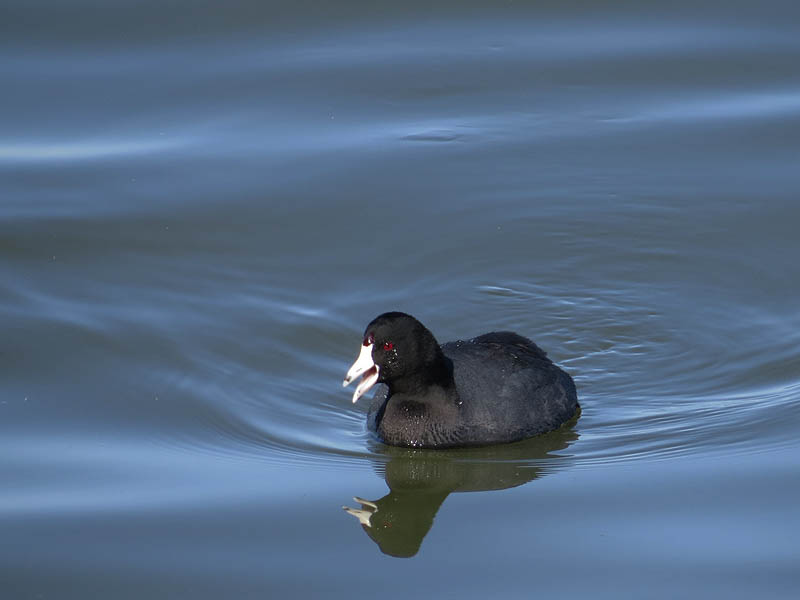

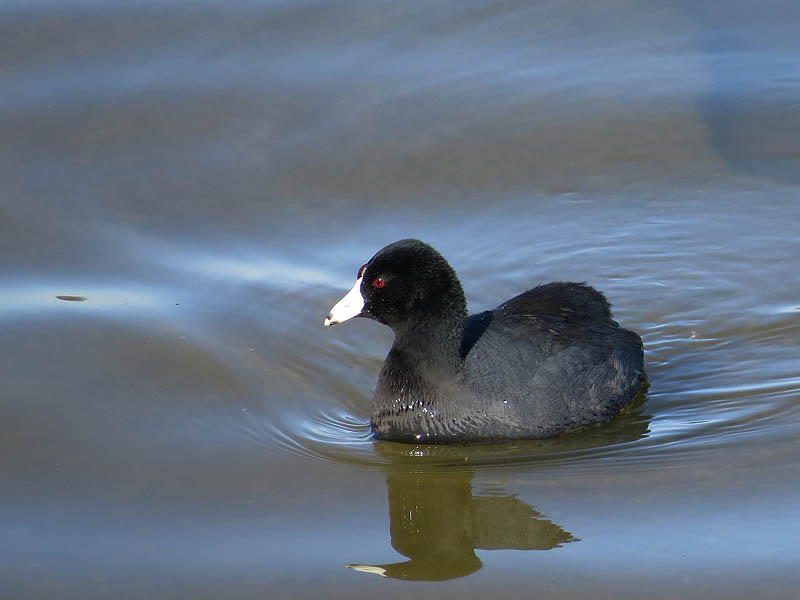
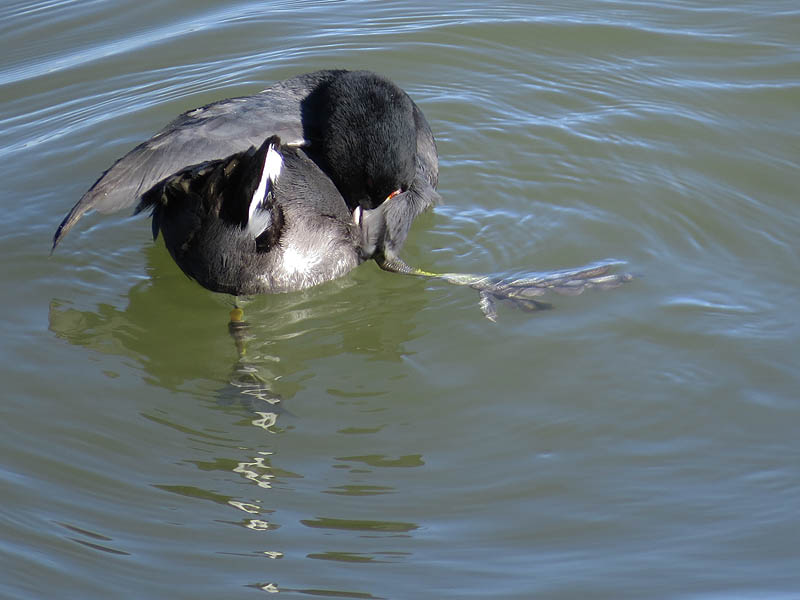
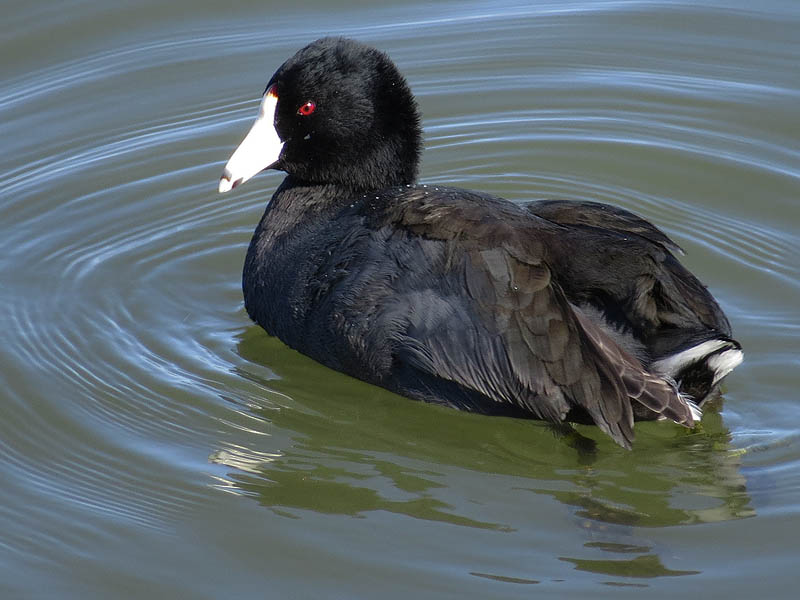
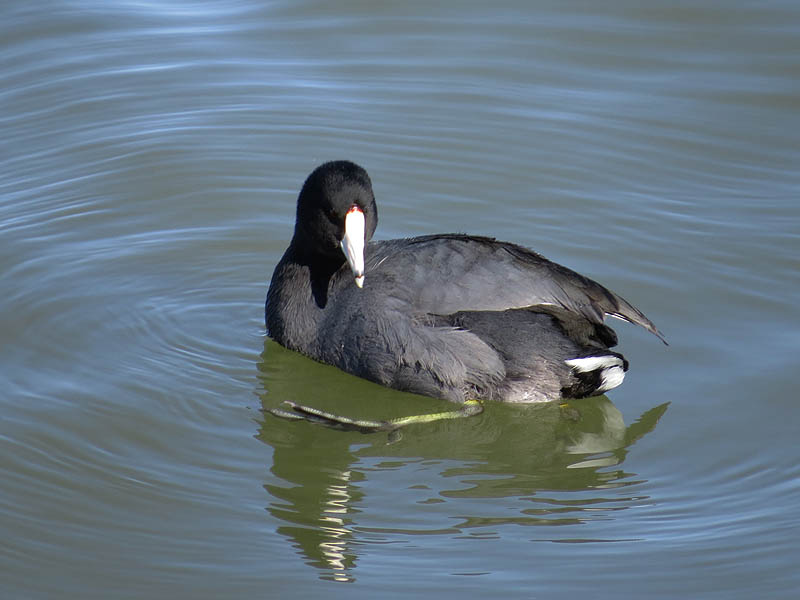
American Coots exploit the same types of habitats as many species of ducks do, and as a result they share many of the same traits and behaviors. The photographs below illustrate a couple of examples.
Ducks of the subfamily Anatinae are known as dabbling ducks. This name describes the way these birds feed from the surface of the water by tipping their bodies so that their heads are submerged with their tails left bobbing in the air. This position allows dabbling ducks to reach submerged vegetation without having to dive.
In these pictures an American Coot can be seen dabbling in his pursuit of aquatic vegetation.
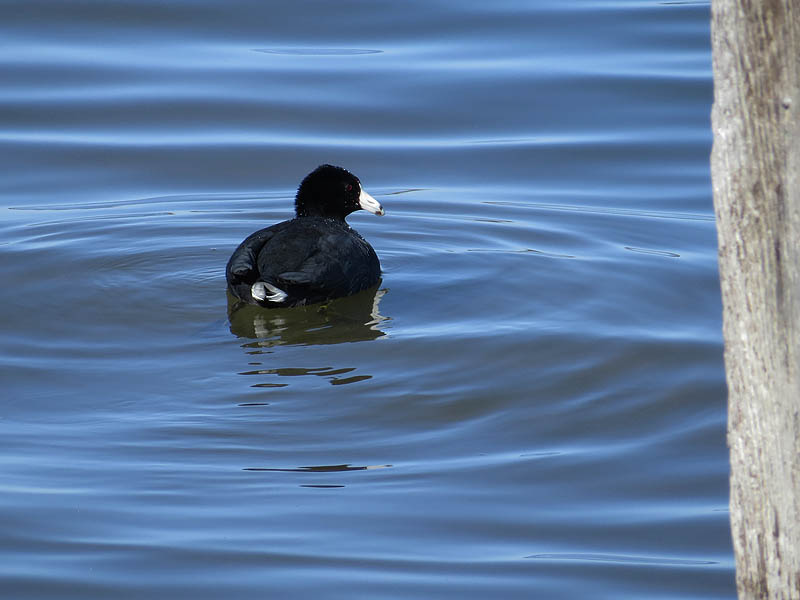
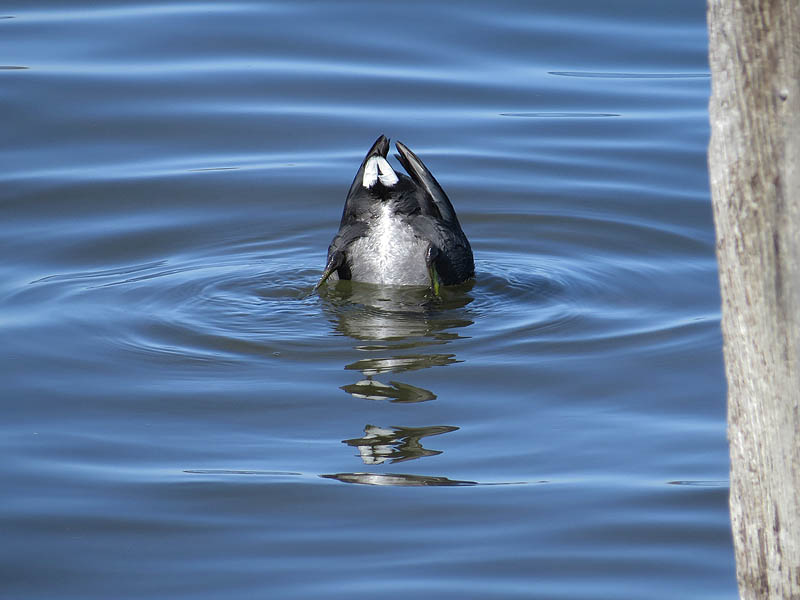
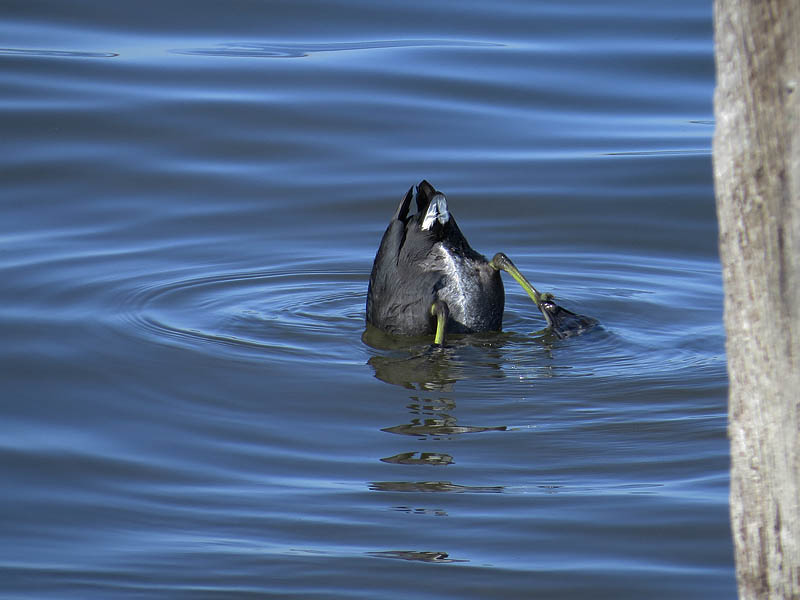
Another subfamily of ducks known as Aythyinae contains the diving ducks. These ducks, as their name implies, are capable of complete submersion and swimming under water when in search of food. As you can see in the following pictures, American Coots often use the same technique.
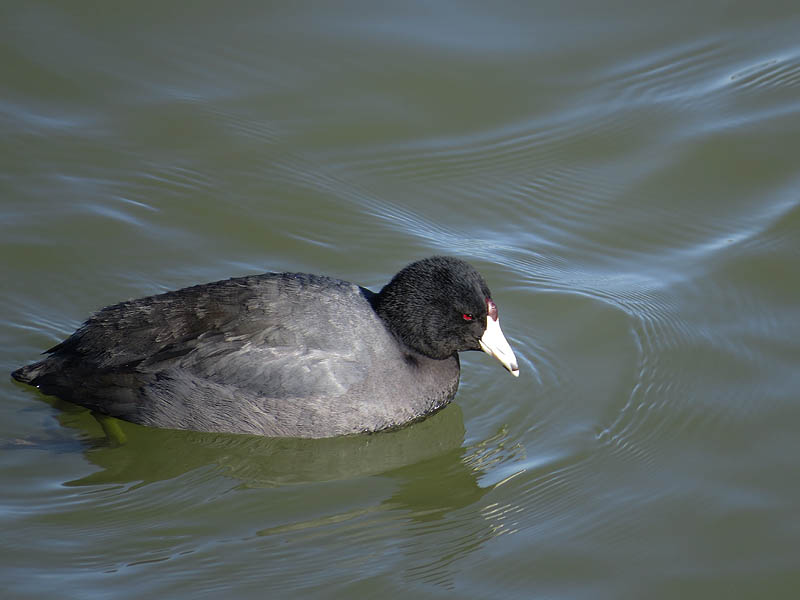
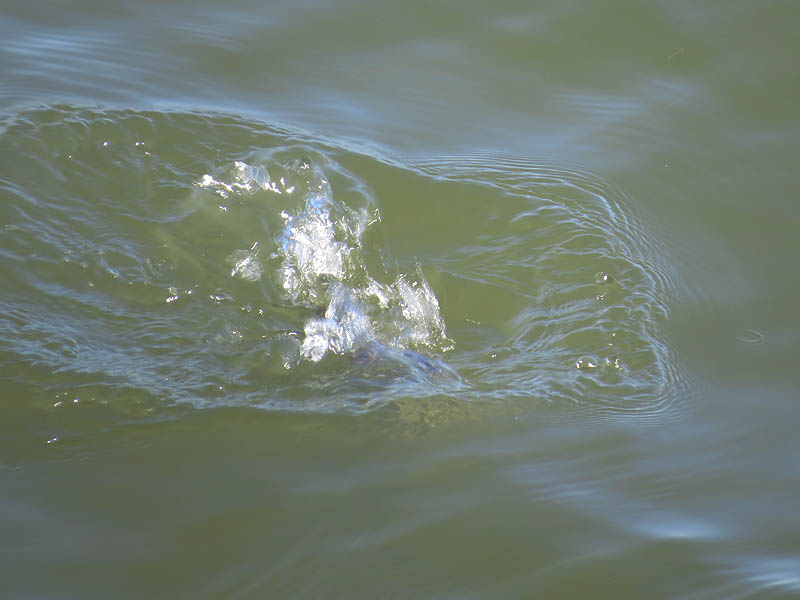
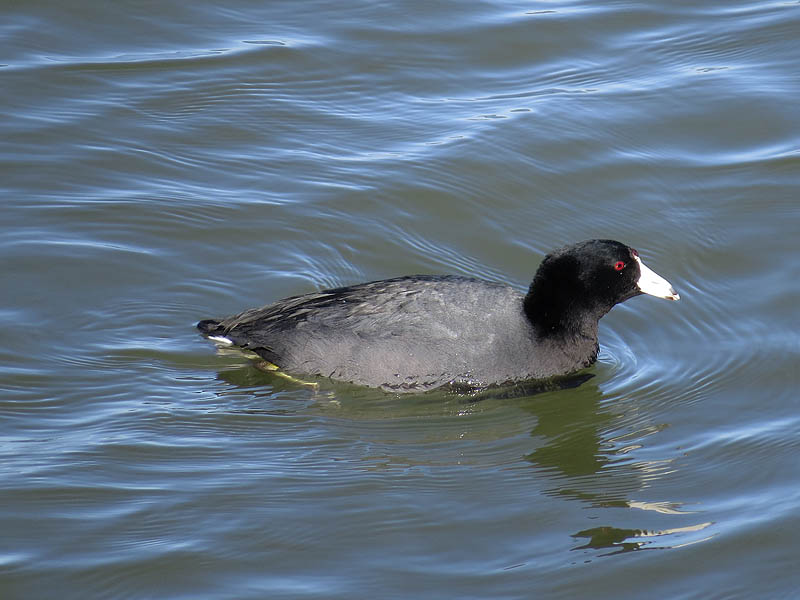


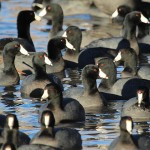
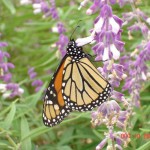
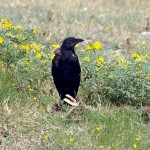
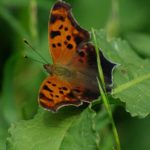
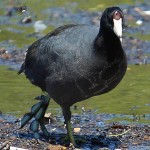
Hi Chris, I wonder if you have observed a feeding interaction between coots and ducks that has been reported in the literature? Coots dive to obtain plant material for food. They typically bring it to the surface to eat. American Wigeons, Gadwalls, and Mallards have all been reported to associate with Coots for the purpose of obtaining some of this plant material as food. Wigeons have even been reported to swim in tight circles around feeding Coots, perhaps to create a vortex in the water that helps material the coots have dislodged to rise to the surface. The interaction has variously been described as klepto-parasitism, altruism, and commensalism, but I believe that more recent studies have suggested that it is more likely commensal than parasitic, given that the coots don’t seem to really lose anything. Though some ducks have been seen to actually take plant material that the coot is carrying, there doesn’t seem to be any shortage of food, just that some is too deep for the ducks to reach on their own.
On the other hand, there are also reports of diving ducks and swans rooting up more material than they can eat, and coots associating with them for the purpose of feeding on the scraps.
You might want to watch for this as you ramble around wetlands and ponds.
I have never seen that behavior (or at least been aware i was seeing it), but I will keep and eye out for it in the future! Thanks for the tip, David!